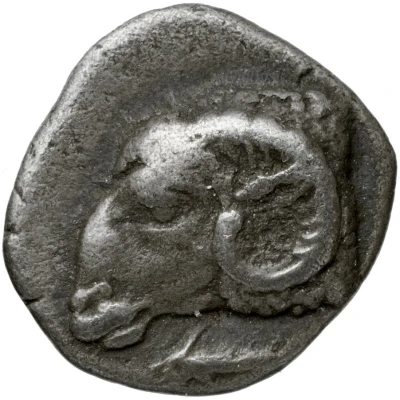


© Classical Numismatic Group, Inc.
Trihemiobol 450 BC - 400 BC
| Silver | 1.3 g | 11 mm |
| Issuer | Delphi (Phokis) |
|---|---|
| Type | Standard circulation coin |
| Years | 450 BC - 400 BC |
| Value | Trihemiobol (¼) |
| Currency | Drachm |
| Composition | Silver |
| Weight | 1.3 g |
| Diameter | 11 mm |
| Shape | Round (irregular) |
| Technique | Hammered, Incuse |
| Demonetized | Yes |
| Updated | 2024-10-10 |
| Numista | N#284834 |
|---|---|
| Rarity index | 100% |
Reverse
Head of goat facing; dolphins upward at sides; all within incuse square.
Interesting fact
The Trihemiobol coin was used in ancient Greece during the 5th century BC and was equivalent to one-third of an Obol, which was the standard unit of currency at the time. The coin was made of silver and weighed 1.3 grams, as . What's interesting is that the Trihemiobol was used in the city of Delphi, which was an important religious and cultural center in ancient Greece. The coin features an image of the mythical creature, the Chimera, on one side and the head of the god Apollo on the other. The Chimera was a symbol of the city of Delphi, and the coin's design was meant to signify the city's connection to the gods and the divine.
Price
| Date | Mintage | VG | F | VF | XF | AU | UNC |
|---|---|---|---|---|---|---|---|
| ND (450 BC - 400 BC) | - | - | - | - | - | - |
Values in the table are based on evaluations by sales realized on Internet platforms. They serve as an indication only for Trihemiobol (450 BC - 400 BC) coin.



